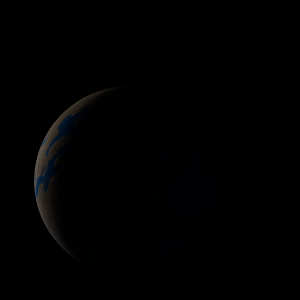|
|
Space Astro
|
Info for exoplanet "Jyou Cwap"
| Scientific (actual) data |
|---|
| Name | Kepler-1231 b |
| Planet status | Confirmed |
| Radius | 0.127 |
| Orbital period | 10.4173 |
| Discovered | 2016 |
| Updated | 2021-02-05 |
| Tconj | 2454970 |
| Publication | Announced on a website |
| Detection type | Primary Transit |
| Alternate names | 2MASS J19142120+4236203 b, K02420.01, KIC 7107802 b, KOI-2420 b, KOI-2420.01, WISE J191421.19+423620.4 b |
| Star name | Kepler-1231 |
| Right ascension | 288.59° |
| Declination | 42.61° |
| Mag j | 13.55 |
| Mag h | 13.238 |
| Mag k | 13.175 |
| Star distance | 948 |
| Star metallicity | 0.06 |
| Star mass | 1.01 |
| Star radius | 1 |
| Star age | 4.17 |
| Star temperature | 5778 |
| Star alternate names | 2MASS J19142120+4236203, KIC 7107802, KOI-2420, WISE J191421.19+423620.4 |
| Wikipedia article | Kepler-1231 b |
Back
| |
| Fictional info (?) |
|---|
| Suggested name | Jyou Cwap |
| Planet type | Cold planet |
| The planet telescopically displays the complete range of phases, similar to Venus and the Moon, as it moves in its inner orbit relative to Kepler-1231, which reoccurs over the so-called synodic period approximately every 162 days. |
| Atmosphere | Carbon dioxide | 52% |
| Ammonia | 43% |
| Nitric oxide | 2.1% |
| Ethane | 0.69% |
| Sulfur dioxide | 0.57% |
| Krypton | 0.57% |
| 2H2O | 0.029% |
| Atmospheric pressure | 70 bar |
 |
| No known satellites |
| Google search for Jyou cwap |
|
Website by Joachim Michaelis
|
|
|
|